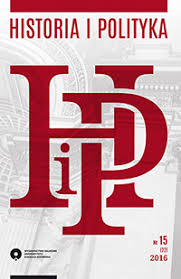Artykuł w języku angielskim dr Agnieszki Nitszke na temat grupy Wyszehradzkiej

Informujemy, że w nr 22(29)/2017 czasopisma "Historia i Polityka" ukazał się artykuł w języku angielskim członka zespołu JMC EUCRIS, dr Agnieszki Nitszke oraz dr hab. Moniki Ślufińskiej pt. Activities of the Visegrad Group in the Context of the CFSP of the EU.
Abstrakt (w języku angielskim): The Visegrad Group (V4) was formed with the aim to support Central European countries – Poland, Czechoslovakia (since 1993 the Czech Republic and Slovakia) and Hungary in their efforts to join NATO and the European Communities. V4 had to redefine its role and tasks after 2004 having achieved the set objectives in the first years of its existence. The new format of the Visegrad Group made provisions for a close cooperation between member states within the European Union. The strategy of combining potentials of the V4 states in negotiations on the EU level is based on reasonable assumptions, as it may lead to an increased significance of the region in the decision-making process. The article discusses the genesis and evolution of the V4 up to 2004. Next there is presented Visegrad cooperation in the field of the Common Foreign and Security Policy of the EU. The text analysis specific issues projecting the safety of Europe in recent years. The analysis of the commitment of V4 in the shaping of the EU CFSP will be based on source materials, mainly on documents produced by the authorities of the Visegrad Group such as presidency programmes, statements, declarations and annual reports.
Abstrakt (w języku polskim): Grupa Wyszehradzka (V4) powstała by wspomóc starania państw Europy Środkowej – Polski, Czechosłowacji (od 1993 r. Czech i Słowacji) oraz Węgier o członkostwo w NATO i Wspólnotach Europejskich. Po pierwszych latach istnienia zakończonych osiągnięciem zakładanych celów, po 2004 r. musiała na nowo zdefiniować swoją rolę i zadania. Nowa formuła Grupy Wyszehradzkiej po 2004 r. zakładała ścisłą współpracę państw członkowskich na forum Unii Europejskiej. Strategia połączenia potencjałów państw V4 w negocjacjach na poziomie unijnym w założeniu jest słuszna, gdyż może prowadzić do zwiększenia znaczenia regionu w procesie decyzyjnym. W artykule omówiona została geneza i ewolucja V4 do 2004 r. Następnie przedstawiona została współpraca wyszehradzka w zakresie Wspólnej Polityki Zagranicznej i Bezpieczeństwa UE. W tekście analizie poddano konkretne wydarzenia rzutujące na bezpieczeństwo Europy w ostatnich latach. Analiza zaangażowania V4 w kształtowanie WPZiB UE została oparta na materiałach źródłowych, w tym przede wszystkim dokumentach wypracowanych przez organy Grupy Wyszehradzkiej, takich jak programy prezydencji, oświadczenia, deklaracje i raporty roczne.
Osoba publikująca: Adam Kirpsza
